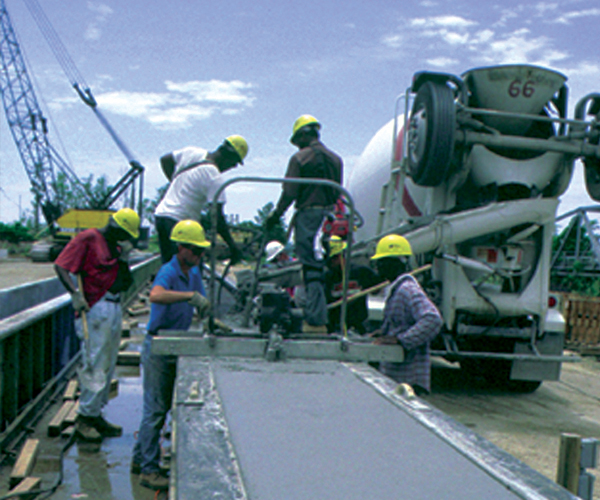Product Description
ADVA® Flow-M is a high range water-reducing admixture. It is a liquid which has been formulated by the manufacturer for use as received. ADVA Flow-M contains no added chloride. ADVA Flow-M is formulated to comply with Standard Specification for Chemical Admixtures for Concrete.
One litre weighs approximately 1.06kg ± 0.02kg.
Dispersion
ADVA Flow-M is a superior dispersing admixture having a marked capacity to disperse the cement agglomerates normally found in a cement-water suspension. The capability exceeds that of normal superplasticiser, resulting in lower dosages and better control.
Product Advantages
- ADVA Flow-M is a highly efficient dispersant producing high slump concrete at very low dosage with enhanced strength in all ages.
- It can be added to concrete mix water for rapid batch.
- It provides a superior water reduction with near neutral set time.
- ADVA Flow-M concrete, even at high slump, exhibits no significant segregation compared to concrete without a superplasticiser at the same slump.
- It finishes easily without stickiness, tearing or spotty set characteristics.
Uses
ADVA Flow-M produces concrete with extreme workability characteristics for high slump, flowing concrete. It also allows concrete to be produced with very low water-cement ratios at low or normal slumps.
ADVA Flow-M is ideal for use in any concrete where it is desired to keep the water-cement ratio to a minimum and still achieve the degree of workability necessary to provide easy placement and consolidation. ADVA Flow-M improves concrete performance, and is ideal for precast concrete and high early strength concrete. ADVA
Compatibility with Other Admixtures
Most Type A water reducers or Type D water-reducing retarders are compatible with ADVA Flow-M as long as they are separately added to the concrete. Caution should be exercised when using ADVA Flow-M together with a retarder, as excessive retardation can occur if the admixture dosages are too high. Pre-testing of the concrete should be performed to optimise dosages and addition times of these admixtures. The admixtures should not contact each other before they enter the concrete
